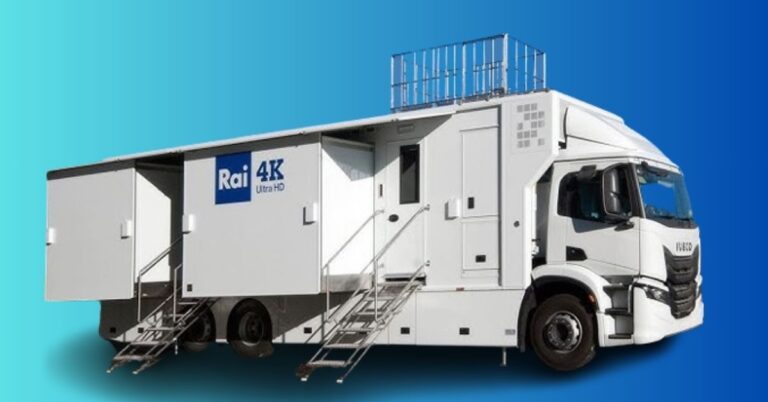When we think about modern transportation, the Rai Van often comes to mind. But what exactly is Rai Van? Simply put, it’s a revolutionary mode of transportation that blends the best of rail and van services to create a seamless, efficient, and eco-friendly transit option. Originally developed to tackle the inefficiencies of traditional public transportation, Rai Vans has seen significant advancements over the years. As we look into 2024, Rai Van has become an indispensable part of urban and rural mobility, offering numerous benefits and promising a brighter future for transportation.
The Evolution of Rai Van
Early Developments
The concept of Rai Van emerged in the early 21st century as cities around the world sought more efficient and sustainable transportation solutions. Initially, these were small-scale projects focused on short-distance travel within city centers. The first Rai Vans were simple and lacked the advanced technology we see today, but they laid the groundwork for future innovations.
Technological Advancements
Over the past two decades, technological advancements have significantly improved Rai Vans. From autonomous driving technologies to integration with smart city infrastructure, Rai Vans has evolved into sophisticated transit systems. These advancements have not only enhanced the efficiency of Rai Vans but also made them more user-friendly and reliable.
Impact of Innovation on Rai Van
Innovation has driven the rapid adoption of Rai Vans. With the integration of AI and IoT, Rai Vans can now offer real-time updates, predictive maintenance, and seamless connectivity with other modes of transportation. These innovations have made Rai Vans a preferred choice for many urban commuters, reducing travel times and improving the overall travel experience.
What is Rai Van and how does it work?
Rai Van is a modern transportation system that combines elements of rail and van services. It operates on dedicated tracks or regular roads, providing efficient, flexible, and eco-friendly transit options.
Rai Van and Urban Mobility
Importance in City Transportation
In densely populated cities, transportation can be a nightmare. Rai Vans offers a solution by providing efficient, reliable, and eco-friendly transit options. They help reduce traffic congestion, lower pollution levels, and offer a comfortable ride for commuters. In cities like Tokyo and New York, Rai Vans have become the backbone of the public transportation network.
Rai Van vs. Traditional Public Transport
Unlike traditional buses and trains, Rai Vans offers flexibility and efficiency. They can operate on dedicated tracks or regular roads, providing direct routes with fewer stops. This makes them faster and more convenient for short to medium distances. Additionally, Rai Vans are equipped with modern amenities like Wi-Fi, air conditioning, and comfortable seating, enhancing the commuter experience.
Case Studies of Urban Rai Van Systems
Several cities have successfully implemented Rai Van systems. Tokyo’s extensive network of Rai Vans has significantly reduced travel times and improved connectivity across the city. Similarly, in New York City, Rai Vans have been integrated into the existing transportation infrastructure, offering a reliable alternative to traditional buses and subways.
How does Rai Van compare to traditional public transportation?
Rai Vans are faster, more flexible, and offer modern amenities compared to traditional public transportation. They provide direct routes with fewer stops, reducing travel times and improving the overall commuter experience.
Technological Innovations in Rai Van
Autonomous Driving Technologies
One of the most significant advancements in Rai Van technology is the adoption of autonomous driving. Self-driving Rai Vans are equipped with advanced sensors and AI, allowing them to navigate complex urban environments safely. This not only improves efficiency but also reduces the risk of human error, making travel safer for passengers.
Integration with Smart City Infrastructure
Rai Vans are an integral part of smart city initiatives. They are connected to citywide networks that monitor traffic, weather, and other conditions in real time. This allows for dynamic routing and scheduling, ensuring that Rai Vans are always operating at peak efficiency. Smart city integration also enables better coordination with other transportation modes, providing a seamless travel experience.
Energy Efficiency and Sustainability
Rai Vans are designed with sustainability in mind. They use electric propulsion systems, reducing their carbon footprint compared to traditional diesel-powered buses. Additionally, many Rai Vans are equipped with regenerative braking systems that capture and reuse energy, further enhancing their efficiency. This focus on sustainability makes Rai Vans an eco-friendly choice for modern cities.
Economic Impact of Rai Van
Cost Benefits for Cities
Implementing Rai Van systems can be a cost-effective solution for cities. They require less infrastructure compared to traditional rail systems and can be deployed more quickly. This makes them an attractive option for cities looking to improve their transportation networks without breaking the bank. Additionally, the operational costs of Rai Vans are lower due to their energy efficiency and reduced maintenance needs.
Job Creation and Economic Opportunities
The development and operation of Rai Van systems create numerous job opportunities. From construction and maintenance to operation and administration, Rai Vans provide employment for a wide range of professionals. Additionally, the improved transportation infrastructure can attract businesses and tourists, boosting the local economy.
Investment Trends in Rai Van
Investors are increasingly recognizing the potential of Rai Vans. With the growing demand for efficient and sustainable transportation, investment in Rai Van technology and infrastructure is on the rise. This influx of capital is driving further innovation and expansion, ensuring that Rai Vans remains at the forefront of modern transportation.
Environmental Benefits
Reduction in Carbon Emissions
Rai Vans are a green alternative to traditional transportation. By using electric power, they significantly reduce carbon emissions, helping cities meet their environmental goals. This reduction in emissions is crucial in the fight against climate change and in improving air quality in urban areas.
Decreasing Urban Congestion
One of the primary benefits of Rai Vans is their ability to alleviate traffic congestion. By providing a reliable and efficient transit option, Rai Vans encourages people to leave their cars at home. This not only reduces the number of vehicles on the road but also speeds up travel times for everyone.
Promoting Green Energy
Rai Vans are often powered by renewable energy sources such as solar or wind power. This promotes the use of green energy and reduces reliance on fossil fuels. By integrating Rai Vans with green energy initiatives, cities can further enhance their sustainability efforts.
What are the environmental benefits of Rai Van?
Rai Vans reduces carbon emissions, decreases urban congestion, and promotes the use of green energy. They use electric propulsion systems and often integrate with renewable energy sources, making them a sustainable transportation option.
Safety and Security Features
Advanced Safety Technologies
Safety is a top priority for Rai Vans. They are equipped with advanced safety technologies such as collision avoidance systems, automated braking, and real-time monitoring. These features ensure that Rai Vans operate safely even in busy urban environments.
Security Protocols and Measures
In addition to safety, security is also crucial. Rai Vans has robust security protocols in place to protect passengers. This includes surveillance cameras, emergency communication systems, and trained personnel on board. These measures help ensure a safe and secure travel experience for all passengers.
Case Studies of Rai Van Safety Records
Rai Vans has an excellent safety record. For example, in Tokyo, the Rai Van system has operated for years without any major incidents. Similarly, in New York City, Rai Vans has proven to be a safe and reliable mode of transportation. These case studies highlight the effectiveness of Rai Van safety measures.
Rai Van in Rural Areas
Addressing Transportation Gaps
Rural areas often face significant transportation challenges due to a lack of infrastructure and services. Rai Vans can help address these gaps by providing flexible and efficient transit options. They can operate on existing roads, making them a practical solution for rural transportation needs.
Benefits for Rural Communities
For rural communities, Rai Vans offers numerous benefits. They improve access to essential services such as healthcare and education, enhance connectivity with urban centers, and boost local economies. By providing reliable transportation, Rai Vans can significantly improve the quality of life in rural areas.
Examples of Successful Implementations
Several rural areas have successfully implemented Rai Van systems. For instance, in parts of rural Europe, Rai Vans has improved mobility for residents and connected them to larger transportation networks. These successful implementations serve as models for other rural areas looking to improve their transportation infrastructure.
Challenges and Obstacles
Technical and Logistical Issues
Despite its many benefits, Rai Vans faces several challenges. Technical issues such as software glitches or hardware failures can disrupt service. Additionally, logistical challenges such as coordinating schedules and routes can be complex, especially in busy urban areas.
Public Acceptance and Trust
Gaining public acceptance and trust is crucial for the success of Rai Vans. People need to feel confident in the safety and reliability of this new mode of transportation. Public outreach and education campaigns can help build trust and encourage more people to use Rai Vans.
Regulatory and Policy Hurdles
Regulatory and policy hurdles can also pose challenges. Governments need to create supportive policies and regulations that promote the adoption of Rai Vans. This includes setting standards for safety, security, and environmental performance, as well as providing funding and incentives for development and deployment.
What challenges does Rai Van face?
Rai Vans faces technical and logistical challenges, public acceptance issues, and regulatory hurdles. Addressing these challenges involves continuous innovation, effective communication, and supportive policies.
Future Prospects of Rai Van
Predictions for 2030 and Beyond
Looking ahead, the future of Rai Vans is bright. By 2030, we can expect to see even more advanced technologies, greater integration with other modes of transportation, and wider adoption in cities and rural areas around the world. The continued focus on sustainability and efficiency will drive the growth of Rai Vans.
Emerging Technologies
Emerging technologies such as artificial intelligence, blockchain, and 5G connectivity will further enhance the capabilities of Rai Vans. These technologies will improve operational efficiency, enhance safety, and provide a better user experience. As these technologies mature, they will play a key role in the evolution of Rai Vans.
Potential for Global Expansion
Rai Vans has the potential for global expansion. As cities and countries around the world seek efficient and sustainable transportation solutions, Rai Vans offers a promising option. With continued investment and innovation, we can expect to see Rai Vans become a common sight in urban and rural areas worldwide.
What is the future outlook for Rai Van?
The future of Rai Vans is bright, with advancements in technology and wider adoption expected. By 2030, we can anticipate even more sophisticated systems, greater integration with other transportation modes, and global expansion.
Case Study: Rai Van in Tokyo
Overview of Tokyo’s Rai Van System
Tokyo’s Rai Van system is one of the most advanced in the world. It integrates seamlessly with the city’s extensive public transportation network, providing efficient and reliable service to millions of commuters. The system is known for its punctuality, safety, and user-friendly features.
Impact on Local Transportation
The introduction of Rai Vans in Tokyo has significantly improved local transportation. Travel times have decreased, traffic congestion has been reduced, and air quality has improved. The Rai Van system has also enhanced connectivity between different parts of the city, making it easier for people to get around.
Lessons Learned from Tokyo’s Implementation
Tokyo’s success with Rai Vans offers valuable lessons for other cities. Key factors include strong government support, effective integration with existing transportation infrastructure, and a focus on user experience. These lessons can help other cities successfully implement Rai Van systems.
Case Study: Rai Van in New York City
Introduction to NYC’s Rai Van Initiatives
New York City has recently introduced Rai Vans as part of its efforts to modernize transportation. The city’s initiatives aim to reduce congestion, improve air quality, and provide reliable transit options for residents and visitors. The Rai Vans are integrated with the city’s subway and bus networks, offering seamless connectivity.
Economic and Social Impact
The economic and social impact of Rai Vans in NYC has been significant. They have created jobs, boosted local businesses, and improved access to essential services. Additionally, Rai Vans has provided a reliable transportation option for underserved communities, enhancing social equity.
Future Plans and Expectations
NYC has ambitious plans for the future of Rai Vans. The city aims to expand the network, introduce more advanced technologies, and continue improving the user experience. These plans will help ensure that Rai Vans remains a key part of the city’s transportation system for years to come.
User Experience and Public Perception
User Feedback and Satisfaction
User feedback and satisfaction are crucial for the success of Rai Vans. Surveys and studies show that most users are highly satisfied with Rai Vans, citing their efficiency, comfort, and reliability. Positive user experiences drive higher adoption rates and support for further development.
Comparing User Experiences in Different Cities
Comparing user experiences in different cities can provide valuable insights. For example, users in Tokyo appreciate the punctuality and cleanliness of Rai Vans, while users in NYC highlight convenience and connectivity. These insights can help cities improve their Rai Van systems and meet user needs.
Strategies to Improve Public Perception
Improving public perception of Rai Vans involves several strategies. This includes effective communication about the benefits of Rai Vans, addressing concerns and feedback, and continuously improving the service. Engaging with the public and building trust are key to the success of Rai Vans.
Government and Policy Support
Role of Government in Promoting Rai Van
Governments play a crucial role in promoting Rai Vans. This includes providing funding, creating supportive policies, and facilitating collaboration between different stakeholders. Strong government support is essential for the successful implementation and operation of Rai Vans.
Key Policies and Regulations
Key policies and regulations are necessary to ensure the safety, security, and environmental performance of Rai Vans. This includes setting standards for vehicle design, operation, and maintenance, as well as providing incentives for the adoption of green technologies.
International Cooperation and Standards
International cooperation and standards can also promote the growth of Rai Vans. By sharing best practices, harmonizing regulations, and fostering collaboration, countries can accelerate the development and deployment of Rai Vans. This global approach will help ensure that Rai Vans meets the highest standards of safety and efficiency.
Conclusion
Rai Vans are revolutionizing modern transportation. With its numerous benefits, including efficiency, sustainability, and improved user experience, Rai Vans is set to become a key part of the transportation landscape in 2024 and beyond. As cities and rural areas continue to adopt and innovate with Rai Vans, we can look forward to a future with more efficient, eco-friendly, and reliable transportation options. The continued support from governments, investments from the private sector, and positive public perception will drive the growth and success of Rai Vans, making them an indispensable part of our daily lives.




